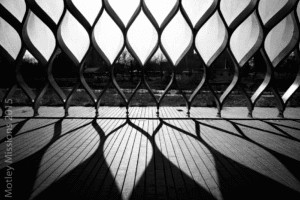A captivating photograph is more than just a snapshot; it’s a blend of various elements working in harmony. Understanding these elements, such as lighting, composition using the rule of thirds, incorporating lines and shapes, highlighting texture and patterns, and utilizing color effectively, is crucial to capturing compelling images.
One of the most fundamental aspects of a good photo is lighting. Whether it’s the soft glow of natural sunlight or the controlled illumination of artificial sources like softboxes or ring lights, lighting dictates the mood and highlights the subject. Proper lighting can transform an ordinary scene into something extraordinary. A photographer needs to adjust camera settings like aperture, shutter speed, and ISO to ensure the light is captured correctly, creating the desired effect.
Composition, often guided by the rule of thirds, plays a pivotal role in creating visual interest. This rule suggests dividing the frame into nine equal sections using two horizontal and two vertical lines. Placing the subject at the intersection of these lines, rather than in the center, often creates a more balanced and engaging composition. This technique helps draw the viewer’s eye and emphasizes the subject within the frame.

Lines, whether straight or curved, lead the viewer’s eye through the photograph. They can create a sense of depth, movement, or even emotion. Skillful use of lines can connect different elements within the image, creating a cohesive narrative. Lines can also be used to frame the subject, further drawing attention to the focal point.
Shapes, like lines, contribute significantly to the overall composition. Recognizing and utilizing shapes, whether geometric or organic, can add depth and interest to a photograph. By emphasizing shapes, a photographer can create a stronger visual impact and guide the viewer’s gaze.

Texture adds a tactile dimension to photographs. Capturing the intricate details of a surface, whether rough or smooth, can make an image feel more realistic and engaging. Effective use of texture allows viewers to almost feel the subject, further immersing them in the photograph.
Patterns, formed by repeating elements like colors, shapes, or objects, create rhythm and visual harmony. They can be found in nature, architecture, and everyday objects. Identifying and highlighting patterns can elevate a photograph from ordinary to extraordinary, captivating the viewer with its visual appeal.

Color is a powerful tool that evokes emotions and sets the mood. Understanding color theory, particularly the color wheel and complementary colors, helps photographers create visually appealing and emotionally resonant images. Warm colors can create a sense of comfort and energy, while cool colors evoke calmness and tranquility.
Ultimately, a good photo is a result of the photographer’s skillful combination of these elements. By mastering lighting, composition, lines, shapes, texture, patterns, and color, photographers can create images that are not only visually stunning but also tell a story and evoke emotion in the viewer.
